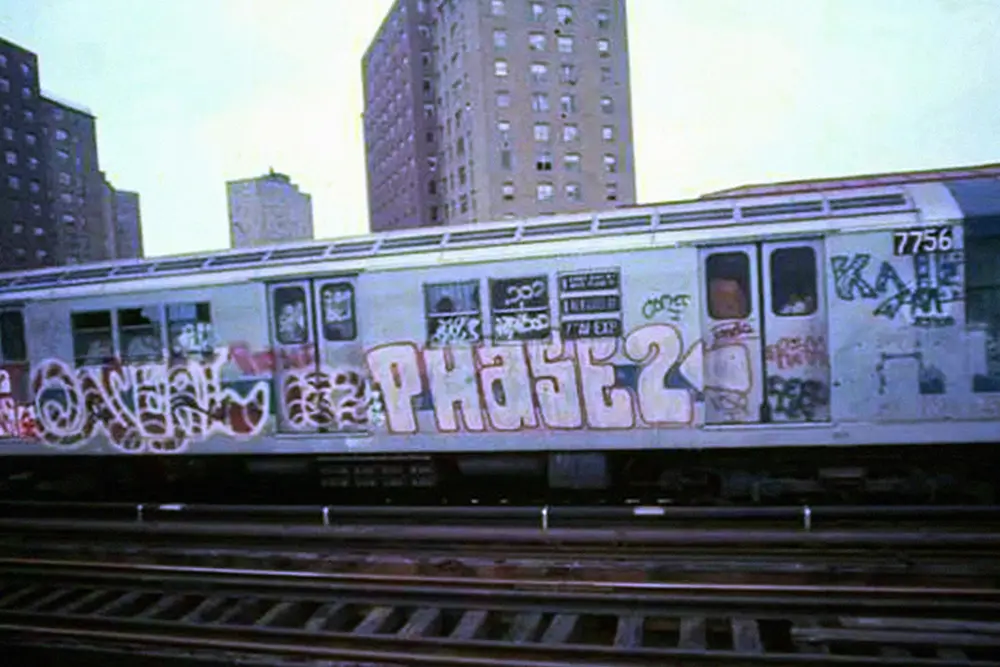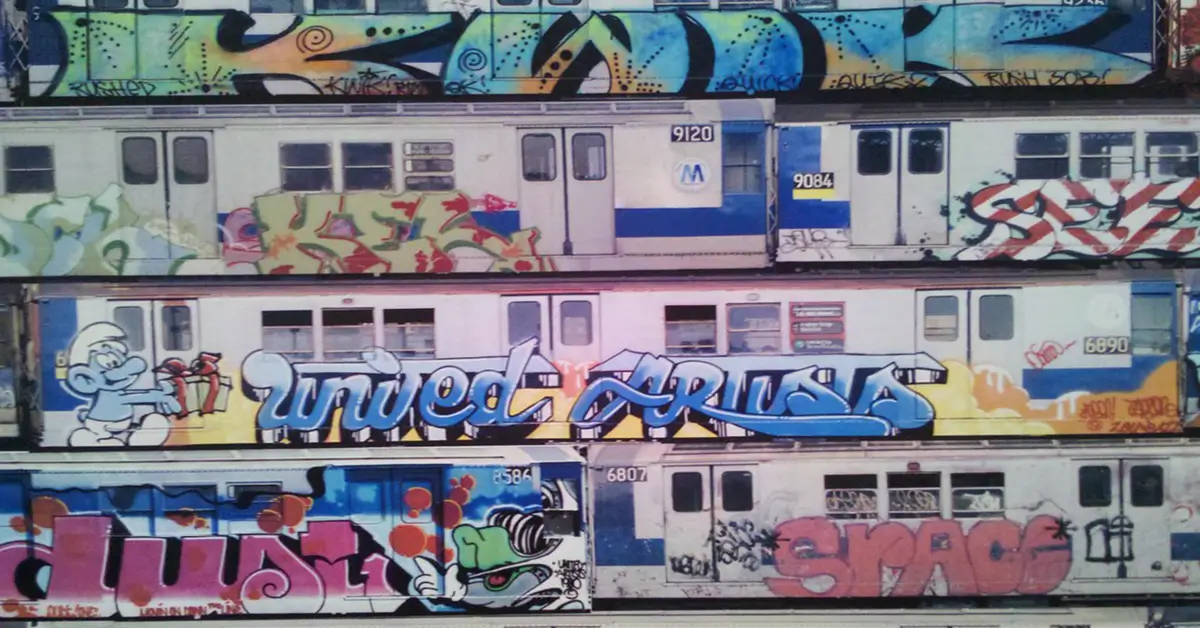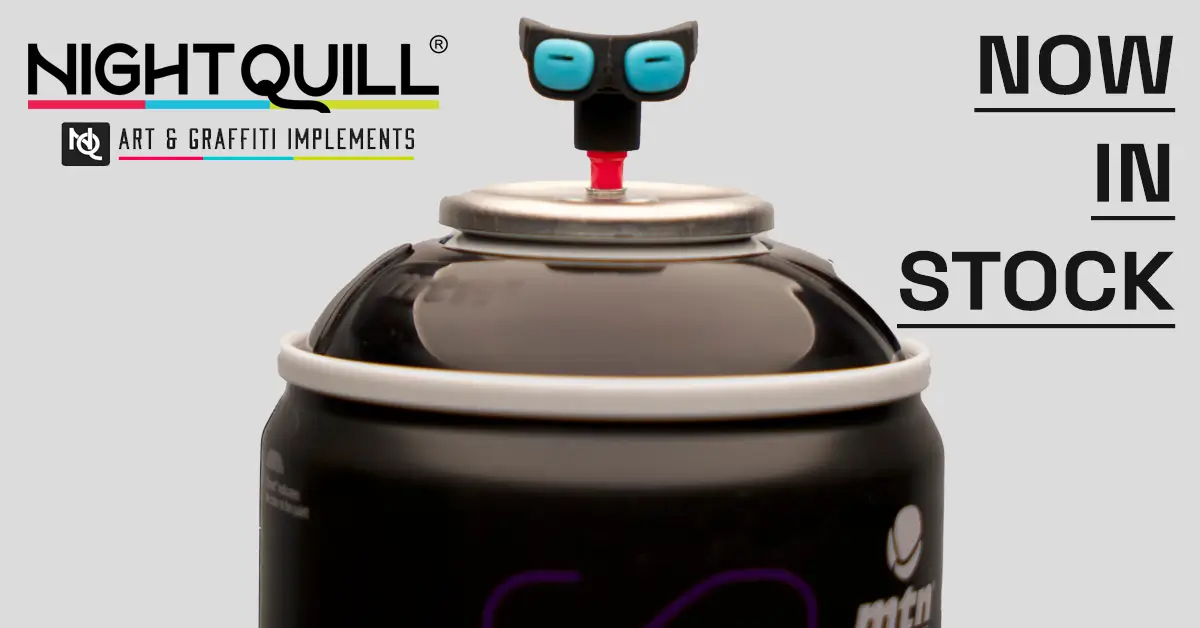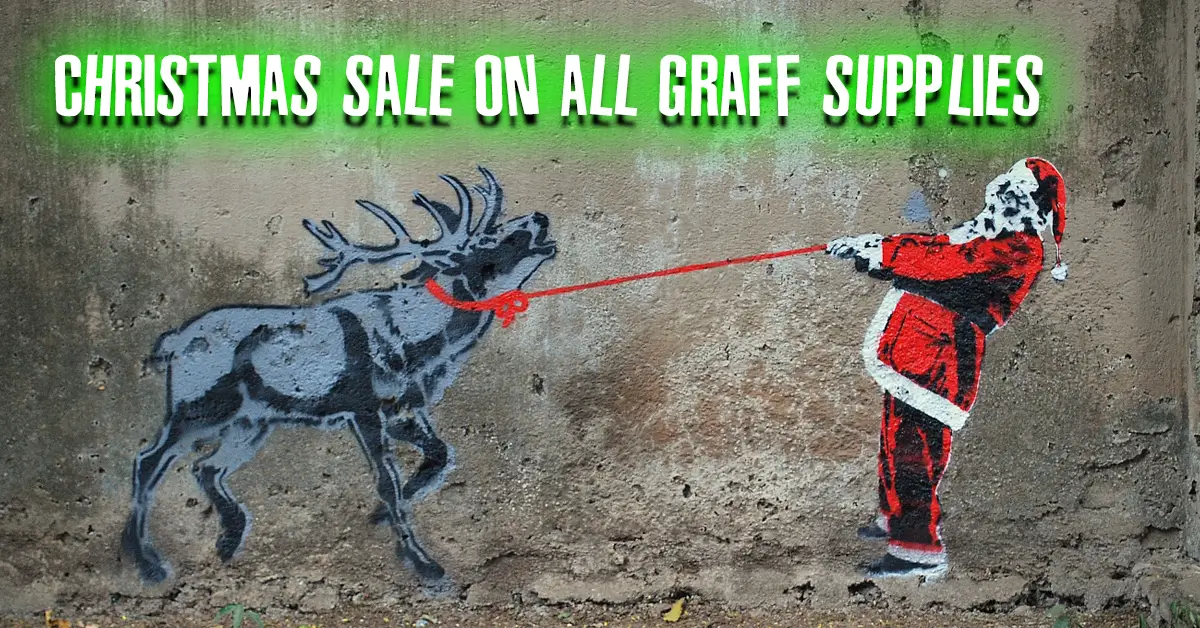NYC Subway Graffiti History
NYC Subway Graffiti History, at least one version of it, goes as follows: On January 20, 2020, the head of the Police Benevolent Association, which supports New York City cops, warned the city was reverting to its crime-ridden days of the ’70s and ’80s. His claim? A short video of a subway train covered in colorful graffiti. What was once a misdemeanor had now become a symbol of the city’s decline. Despite MTA rules that prohibit defaced cars from running, this one not only operated but excited passengers who filmed it. The PBA, in conflict with the mayor, posted the video online, calling it “A true sign of decay.” How did we get here?
When the NYC subway was built, train yards were created to store subway cars, often on cheap land at the end of lines, some of which was farmland. Until 1970, these train yards were some of the quietest spots in New York.
Graffiti emerged in the late 1960s as spray paint became widely available and the magic marker was invented. Kids who once wrote their names with shoe polish or chalk now had more powerful tools. By 1969, TAKI 183 had become an obsessive figure in the graffiti scene, tagging subway interiors. By 1972, stealing spray paint and tagging the exterior of subway cars became standard practice. Knowledge of how to paint entire trains was passed down through generations of graffiti writers.

Before 1970, kids would explore train yards for fun, often without consequence. Workers sometimes befriended them, sharing insights about the transit system. But as graffiti spread, the relationship became adversarial. Arrests began, and small fences were built around the yards.
By 1973, graffiti had evolved into intricate masterpieces on subway cars, and a network of writers emerged at the Grand Concourse Writers Bench, where tips about hot yards and the best times to paint were shared.
Train yards weren’t the only targets. Layups—trains left outside the yard overnight—were prime spots for graffiti. One famous layup was the 1 tunnel on the Broadway line. Between 1971 and 1989, graffiti writers honed their skills here, knowing they had a 26-hour window to paint after the sweepers finished their work at 2:00 AM. Writers brought outlines and paint to the tunnel, working with precision while avoiding the deadly third rail.
The 1 tunnel became home to The Death Squad crew in 1977, competing with other legendary crews like RTW and TMT. Some writers became so comfortable that they’d even take breaks for food while sitting near the third rail.

In the early ’80s, a new wave of crews emerged, battling for dominance. By 1984, the MTA started removing graffitied cars from service, making it difficult for writers to photograph their work. The introduction of modern Kawasaki trains, which were kept in fortified yards, sent a clear message: these new trains were off-limits, and graffiti began to decline.
By 1989, the MTA declared victory over graffiti, having secured most train yards. However, a few dedicated writers continued to paint the new trains as a badge of honor, sparking what many call the “clean car movement.”
Despite the MTA’s efforts, graffiti didn’t disappear. By the 2000s, European graffiti tourists began painting New York subways, taking quick photos, and leaving the city. Painting entire trains became a rare but prized feat. While only three full trains were painted during the 20-year subway movement, European writers, using newer techniques and tools, could paint an entire 10-car train in under two hours.
The most recent full-train graffiti, publicized by the police themselves, sparked renewed interest in graffiti on subway cars. Since then, more full cars have been spotted, driven by writers chasing the same fame. What was once the elusive Holy Grail of graffiti—a fully painted train—may not be so rare anymore, thanks to the Police Benevolent Association.
[Via…]




